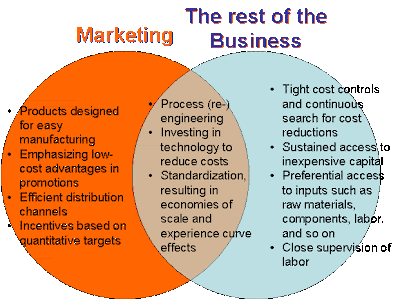The internet is a neat place. It is pretty simple to dream up new concepts and create new things provides. Or maybe you
mashup some existing concepts and create something new. Revolution, evolution ... change!
But, the internet is also a tricky place. There is no guarantee of success. You might believe that you have THE neatest concept and it might be put together brilliantly. But, if no one visits it and if the people who visit it don't like it, then you are doomed to failure as a result of your concept's failure. On the other hand, if it takes off it can really take off. Your site could become a viral success and overwhelm your servers, your payment processing, your supply chain, or your customer service. Now you find that you are doomed to failure as a result of your concept's success.
When you start a Web Marketing Project you will normally start by putting together a business case. A business case is (in it's most basic form) simple math:
-(Startup Costs + Year 1, 2, 3, ... n Operating Costs)
+ Year 1, 2, 3, ... n Sales or Savings
= Net Benefit
The costs and benefits you use for the business case should be as comprehensive as possible, and should be as conservative as possible. This requires suspending your belief in your concept and attempting to be as objective as possible. If the Net Benefit is positive, then you should do the project!
A few notes:
- To be technically correct on this, you should really use a "cost of capital" and calculate a Net Present Value. You can calculate this easily in Microsoft Excel.
- For a web project, I wouldn't look out more than three years to see the Net Benefit turn positive. Two years may even be pushing it.
- Operating costs include fixed and variable costs covering everything from IT development and operations, to software licenses, to handling customer service inquiries, to processing orders, to handling returns, and so on.
- Be sure to factor in planned growth for things like additional servers, licenses, customer service costs, and so forth.
That will give you your base case. Now it is time to apply the Web Business Success Law (I just coined that phrase). It is simple ... "Expect Failure, but Plan for Overwhelming Success."
Applying the Web Business Success Law:- Expect Failure - What if your conservative estimates are too optimistic? If you launch the concept and nothing happens, what is the worse thing that can happen to your business? Be prepared for that.
- Plan for Overwhelming Success - Alternatively, what happens if your estimates are much too conservative? If the concept takes off and you become an overnight internet success story how will you scale the business? Plan carefully for that.
What does all this mean for you? First of all, you will need to really understand your
Web Strategy in order to plan the path to success for your concept. Then you will need to put together a solid
Web Marketing Project Work Plan, including:
- Project Charter - Describes what the project vision is, how the project will be performed, who is involved in the project and in what roles, what the risks are and how they will be mitigated, and other similar factors.
- Project Plan - The GANTT chart which shows what will be done, task dependancies, who does what, how long each task will reasonably take, and even how much the project resources will cost.
- Project Budget - The budget describes the financial implications of the project including software, hardware, expertise, training, system maintenance and system growth over several years.
Contact Market GoGo for help with your Marketing Project.




